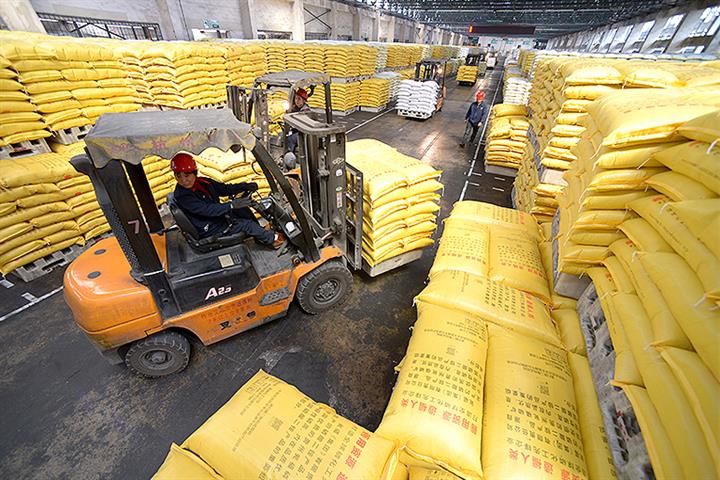 China Should Step Up Subsidies to Farmers to Offset Surging Fertilizer Prices, Academic Says
China Should Step Up Subsidies to Farmers to Offset Surging Fertilizer Prices, Academic Says(Yicai Global) March 10 -- The Chinese government needs to hike subsidies for farmers growing grain, increase fiscal payments to major grain-producing areas and implement other measures to help cover a big leap in the cost of fertilizers and guarantee farmers’ income, the vice director of Zhengzhou Hualiang Technology’s Yida Research Institute told Yicai Global.
The central government should step up subsidies to farmers, increase fiscal transfers to local governments and promote insurance policies that cover the cost of grain and protect farmers’ income, otherwise this year's big increase in fertilizer prices may cause some farmers to apply fewer fertilizers, which will impact the crop's yield, said Zhang Zhixian.
Farmers should also be encouraged to join agricultural cooperatives and other kinds of collective bodies that enable them to purchase fertilizers and other farming necessities through bulk-buy schemes and thus at a lower cost, he added.
The cost of potassium chloride, also known as potash, was nearly double on March 7 what it was a year earlier, and had gained 7.1 percent month-on-month, according to data from the China Agricultural Means of Production Association. The price of urea surged 29.4 percent year-on-year and 0.7 percent month-on-month while that of diammonium phosphate jumped 15.2 percent from a year ago and 0.01 percent from the month before.
China produces enough nitrogen-based and phosphate fertilizers for its own needs, with a slight surplus for export, said Li Jian, researcher at agricultural consultancy Bric Consultant. But it relies on imports for its potash needs, buying mostly from Canada, Russia and Belarus. The ongoing Russia-Ukraine conflict has put pressure on potash imports, making prices jump, he added.
Phosphate fertilizer has become more expensive as a lot of phosphorus resources are being diverted to the rapidly growing electric car battery sector, driving up phosphorus ore prices, while soaring coal prices have been pushed up the production costs of Urea.
Global fertilizer supply and demand have been imbalanced since 2020, Li said. As a result, with logistical difficulties and increasing raw material prices, fertilizer prices are expected to rise further.
Editors: Tang Shihua, Kim Taylor